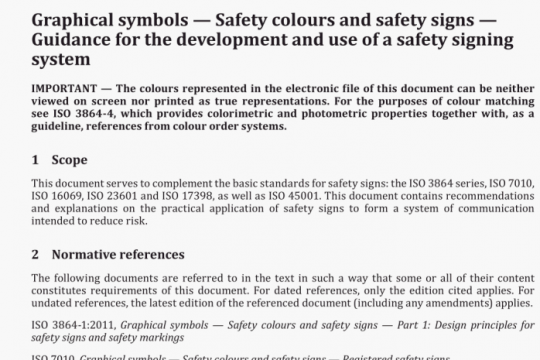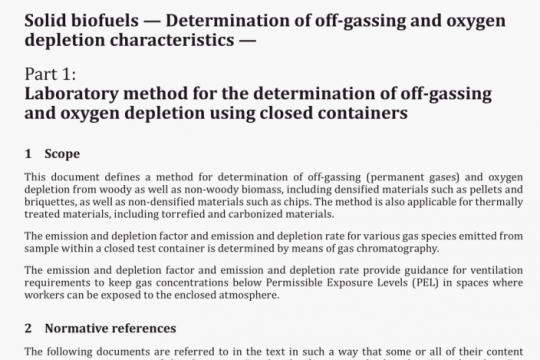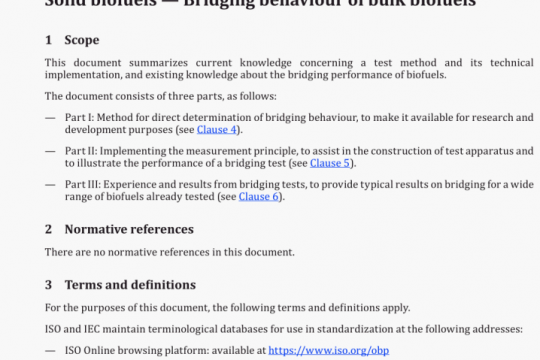ISO 5725-4 pdf free download
ISO 5725-4-2020 pdf free download.Accuracy (trueness and precision) of measurement methods and results一 Part 4: Basic methods for the d etermination of the trueness of a standard measurement method.
5 Determination of the bias of a standard measurement method by an
interlaboratory experiment
5.1 Experimental design considerations
5.1.1 Objective
The objective of the experiment is to estimate the value of the bias of the measurement method and to determine when it is statistically significant. When the bias is found to be statistically insignificant, then the objective is to determine the maximum absolute value of bias that can remain, with a certain probability, undetected by the results of the experiment.
© Iso 2020 – All rights reserved 3
Iso 5725-4:2020(E)
5.1.2 Layout of the experiment
The layout of the experiment is almost the same as that for a precision experiment, as described in ISO 5725-2. The differences are
— the number of participating laboratories and the number of measurement results shall also satisfy the requirements given in 53 and
— there is an additional requirement, given in 5A, to use an accepted reference value of the property being measured.
5.1.3 Cross-references to Iso 5725-1 and ISO 5725-2
Requirements on experimental design given in ISO 5725-1 and Iso 5725-2 apply. When reading ISO 5725-1 and ISO 5725-2 in this context, “trueness” shall be inserted in place of “precision” or “repeatability and reproducibility” as appropriate.
5.2 The statistical model
The basic model of a measurement result,y, can be expressed as
y=p+ö+B+e (1)
where
p is the accepted reference value of a property being measured;
6 is the bias of the measurement method under investigation;
B is the laboratory component of bias;
e is the random error occurring in every measurement under repeatability conditions.
NOTE In this document, bias is evaluated at one level at a time; for convenience, the index j, defined in ISO 5725-1, for the level of property has been omitted throughout.
When all of measurement results are obtained according to the requirements in 5 and 5A from the sufficient number of participant laboratories and sufficient number of measurements under repeatability conditions in each laboratory by using the same measurement method, the bias of the measurement method, at each level of the property, is estimated by (2)
where
3 is an estimate of the bias of the measurement method under investigation;
is the grand mean of the measurement results from all participant laboratories;
p is the accepted reference value of the property being measured.
5.3 Required number of laboratories and measurements
The number of laboratories and the number of measurement results required at each laboratory are interdependent. Guidance on selecting these numbers is given below. Although it is assumed that the laboratory biases can be regarded as draws from an approximately normal distribution, in practice the guidance is appropriate for most unimodal distributions.ISO 5725-4 pdf download.




